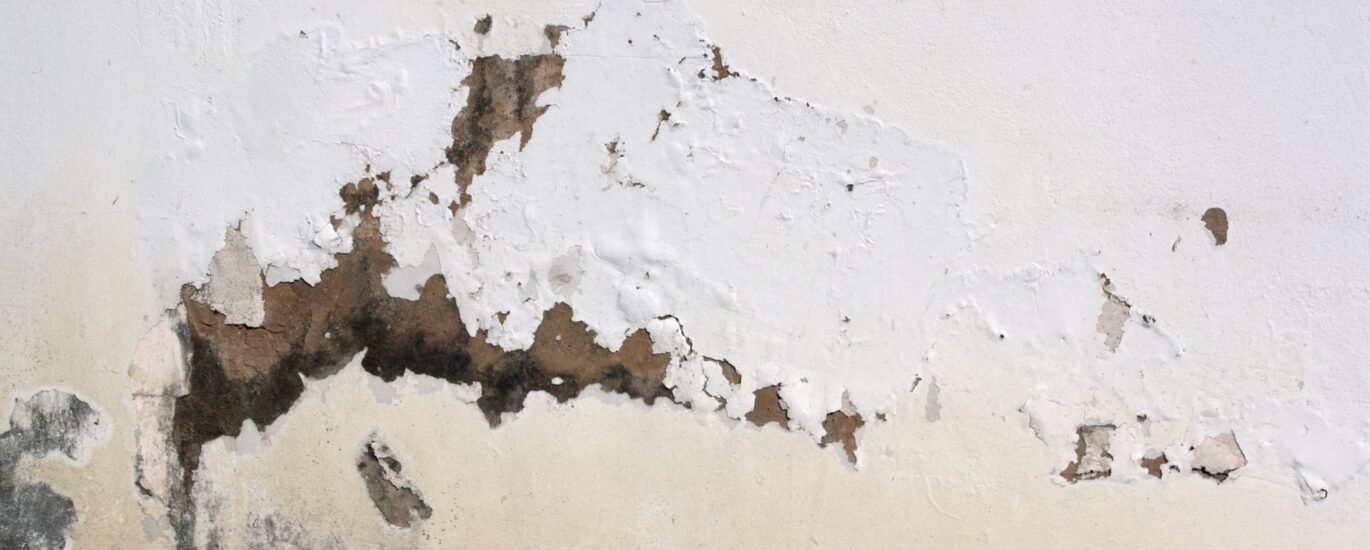Rising damp is a common and troubling issue found in many homes across the UK, particularly in older properties. It can damage walls, floors, and decorations, and if left untreated, it can cause serious structural problems and affect the health of the occupants. In this blog, we’ll explore what causes rising damp, how to identify it, and what you can do to address it.
What Is Rising Damp?
Rising damp refers to the upward movement of groundwater through the pores and capillaries of a building’s walls and floors. When water from the ground rises through bricks, mortar, or stone, it brings with it salts and moisture, leading to visible damage inside the property.
Unlike condensation or penetrating damp, which are caused by different moisture sources, rising damp comes directly from the ground underneath and outside the property.
What Are the Main Causes of Rising Damp?
Understanding the root causes of rising damp is crucial for effective treatment. The primary causes include:
1. Lack of a Damp-Proof Course (DPC)
One of the most common causes of rising damp is the absence of a damp-proof course (DPC). A DPC is a horizontal barrier, usually made from slate, bitumen, or plastic, installed into the walls during construction to prevent groundwater from rising into the property. Many older houses, particularly those built before 1875, were constructed without a DPC.
2. Failure or Damage to the Existing DPC
A property may often have a damp-proof course, but it becomes damaged or deteriorates over time. Physical breakdown, movement in the building’s structure, or previous poor-quality repairs can all cause a DPC to fail, allowing moisture to rise unchecked.
3. Bridging of the DPC
Bridging happens when external or internal alterations bypass or compromise the DPC. This can occur due to:
-
Raised external ground levels (e.g., soil or patio higher than the DPC)
-
Installation of internal plaster or insulation that overlaps the DPC
-
Debris buildup inside cavity walls
When bridging occurs, moisture can bypass the protective barrier and start to travel upwards.
4. Poor Drainage Around the Building
Properties with poor drainage around the foundation are more likely to experience rising damp. Saturated soil caused by ineffective gutters, downpipes, or surface water runoff increases the amount of groundwater that can penetrate the walls.
5. Defective or Blocked Gutters and Pipes
Faulty gutters, leaking downpipes, and blocked drains can lead to excess water running down external walls. This constant exposure to moisture can contribute to the breakdown of the wall’s natural defences and allow rising damp to develop.
How to Identify Rising Damp
Recognising rising damp early can save a lot of time, stress, and money. Signs to look for include:
-
Damp patches and tide marks on walls, typically up to one metre above floor level
-
Peeling wallpaper or blistering paint
-
Crumbling plaster or salt deposits on interior walls
-
Rotting skirting boards, floors, or timber frames
-
Musty smells in rooms near the ground level
It’s important to note that some symptoms of rising damp can be mistaken for other types of damp, such as condensation. A professional inspection is recommended to accurately diagnose the problem.
Why Is Rising Damp a Problem?
If rising damp is not addressed, it can lead to:
-
Structural damage to walls and flooring
-
Health issues due to mould and mildew
-
Devaluation of the property
-
Increased heating costs due to poor insulation caused by dampness
Because rising damp affects the fabric of the building itself, prompt action is essential to prevent long-term and costly damage.
How to Fix Rising Damp
Fixing rising damp typically involves one or more of the following solutions:
-
Installing a new damp-proof course: Either physical or chemical DPCS can be inserted into existing walls.
-
Lowering ground levels: If bridging is the issue, the external ground level may need to be reduced.
-
Improving drainage: Ensuring rainwater drains away from the building properly can reduce moisture build-up.
-
Repairing gutters and pipes: Fixing external leaks can prevent excess moisture from damaging the building.
-
Internal wall treatments: Damaged plaster may need to be removed and replaced with damp-resistant materials after the damp has been eliminated.
If you’re struggling with rising damp in your home, it’s crucial to get expert help. Also read: How to Damp Proof a Wall.
Living with Rising Damp? Get Expert Advice Today
If you’re experiencing signs of rising damp and your landlord has failed to take action, you could be eligible to make a housing disrepair claim. Rising damp is not just a nuisance—it can impact your health and safety.
At Housing Disrepair Team, we specialise in helping council and housing association tenants across the UK claim compensation and demand urgent repairs.
Contact our team today for free advice on making a housing disrepair claim. Start your No Win, No Fee claim now and protect your home and your health.
Please Note: The solicitor we recommend will charge you a fee of 36% (inclusive of VAT) off your compensation. The solicitor may charge a termination fee if you cancel your agreement with them after the cancellation period, please read their Terms and conditions for more information.






